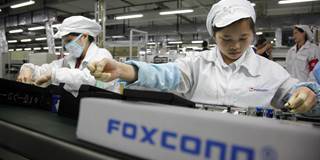While the world watches anxiously for signs of US President Donald Trump’s next move vis-à-vis China, Chinese leaders remain focused on the next stage of their country's ongoing economic transformation. What they do should interest everyone – especially US policymakers.
GENEVA – While the world watches anxiously for signs of US President Donald Trump’s next move vis-à-vis China, Chinese leaders remain focused on the next stage of their country’s ongoing economic transformation. What they do should interest everyone – especially US policymakers.
China’s industrialization process, like that of other successful East Asian economies, has combined profit-led investment, active industrial policy, and export discipline. But that approach has its limits, exemplified in the numerous developing countries that have attempted to climb the same development ladder, only to become stuck on the middle rungs or even to fall back, owing to what Harvard University economist Dani Rodrik has called “premature deindustrialization.”
China hopes to avoid this fate, with the help of “China Manufacturing 2025” (CM2025), a roadmap released by Premier Li Keqiang in 2015 to guide the country’s industrial modernization. The strategy focuses on developing advanced manufacturing sectors, but also considers how producer services, services-oriented manufacturing, and green technologies can complement that process.

GENEVA – While the world watches anxiously for signs of US President Donald Trump’s next move vis-à-vis China, Chinese leaders remain focused on the next stage of their country’s ongoing economic transformation. What they do should interest everyone – especially US policymakers.
China’s industrialization process, like that of other successful East Asian economies, has combined profit-led investment, active industrial policy, and export discipline. But that approach has its limits, exemplified in the numerous developing countries that have attempted to climb the same development ladder, only to become stuck on the middle rungs or even to fall back, owing to what Harvard University economist Dani Rodrik has called “premature deindustrialization.”
China hopes to avoid this fate, with the help of “China Manufacturing 2025” (CM2025), a roadmap released by Premier Li Keqiang in 2015 to guide the country’s industrial modernization. The strategy focuses on developing advanced manufacturing sectors, but also considers how producer services, services-oriented manufacturing, and green technologies can complement that process.